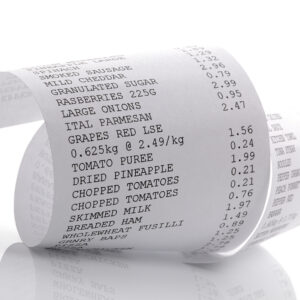It’s no secret we are experiencing inflation, and it is hitting us where it hurts most—in our pocketbooks and on our kitchen table. I got wind of inflation in the oddest of ways. I go to Trader Joe’s every week, and at checkout, I guesstimate my food bill—sort of like playing “The Price is Right.” I do not mentally tally the goods as I walk through the aisles because, in my book, that’s cheating.
Until recently, I had the useless talent of guessing just right—within 2 to 4 percent of the bill. I attribute this “skill” to being a grocer’s daughter, which might also explain why I always have food on my mind. And because I’ve been guesstimating forever, Trader Joe’s cashiers seem to know my game and are amused.
About three months ago, my guesstimates started being wildly off—by as much as 15 percent. Just as I was getting ready to stop playing because I had lost my useless capability, Michele, a cashier, offered me, “You are not taking into account inflation. Our prices have gone up—just like everyone else’s.” At her suggestion, I started bumping up my guesstimate by 10 percent, and, yes, I was baaack!
The small “inflation adjustment” did the trick. I didn’t need to read anything from today’s most noted economists to understand that inflation was real and hit me right at the Trader Joe’s register. My lemons were now .49 cents each, up from .39 cents. My bag of potato chips had risen in price from $1.99 to $2.29, and on and on it went.
Just as I was digesting my new reality, I read about an unusual trend in 2022. It’s called “scrap cooking,” and the goal is zero waste. This means that almost everything gets used in the menu, from the stem of broccoli to orange peels. What can you do with orange peels? Make them a “candied” dessert. And broccoli stems? Shave them and then add to your pasta.
Scrap chefs and scrap cooking segments now appear on today’s cooking shows. The topic even made a recent dinner conversation with my hip niece, who stays very current and shared what she has learned. I suspect that scrap cooking is another example of necessity being the mother of invention. Our budgets are pinched as we try to make do, and so we call upon a new level of creativity in our cooking.
It turns out food is the third-largest expenditure in American homes. The Bureau of Labor Statistics reports that housing represents 35 percent of the average American’s budget, transportation 16 percent, and food 12 percent. Food adjustments offer the potential for quick budgetary relief when compared to changing your residence or flipping your car. With food, we can go from steak to pasta at a moment’s notice. Neither the shortage of semiconductors nor needing to engage a realtor will slow us down.
Historically, the U.S. Department of Agriculture (USDA) has tried to help match various food budgets with nutritional requirements for a healthy diet. They have laid out four different menu plans that run the gamut from “thrifty” through “low-cost” and “moderate” to “liberal.” All the plans are intended to be nutritionally sound where the significant variations relate to our source of protein (for example, beans versus beef) and whether we buy fresh or frozen when it comes to fruits and vegetables.
The biggest problem with the USDA’s plans is that they were built in 2007. Their estimate for a family of four, under the modest plan, still sits at between $922 and $1101 per month. In 2022 with a double-digit rise in price across poultry, fish, eggs, and beef, this doesn’t work. Fortunately, the USDA is looking to update its guidelines.
While no one that I know likes inflation-induced stress, there is a small silver lining. Though I am far from zero-waste, I have become craftier in my cooking and use of leftovers. Also, my family appreciates the splurge of steak more because it’s less frequent.
If history is any guide, we could be stuck in this inflationary mode for a while. I don’t want to sugarcoat our new reality, but, like scrap cooking, other positive behaviors might emerge. And I am happy to report that I am back in the winner’s circle in my personal game of the “Price is Right.”

